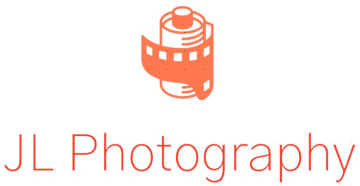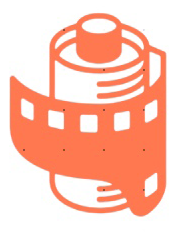Film Photography Prices Soar: How Can the Medium Stay Affordable?
Rising Costs in Film Photography: Can It Stay Accessible for Beginners?
Film photography has been a beloved art form for over a century, captivating the hearts of many photographers with its unique aesthetic. However, the rising cost of film photography has made it challenging for new entrants to join the medium. In this article, we’ll explore the driving factors behind these increasing costs, their impact on the photography community, and potential solutions to make film photography more accessible and affordable.
A Historical Perspective on Film Photography Costs
Film photography has evolved considerably since its inception in the early 19th century. Initially, film production was labor-intensive and expensive, making it an exclusive art form for the wealthy. However, by the mid-20th century, technological advancements led to mass production and the democratization of photography, allowing more people to enjoy the medium.
During the golden age of film photography in the 1970s and 80s, companies like Kodak and Fuji produced vast quantities of film, which drove prices down. For decades, film photography was relatively affordable, with inexpensive point-and-shoot cameras and widely available photo labs.
But in the 2000s, with the rise of digital photography, demand for film dropped significantly. Many film manufacturers went out of business or shifted their focus to digital products. This reduced competition and production volumes, leading to higher costs for film stocks and development services today.
The Rising Costs of Film Photography: A Barrier for New Photographers
The cost of film stocks has increased significantly over the years, with some popular films costing upwards of $10 per roll. Additionally, film development fees have also risen, making it expensive for photographers to process their film. These rising costs are a significant barrier to entry for many photographers, particularly young photographers or those from low-income backgrounds.
According to a survey by the Film Photography Project, 70% of photographers consider the cost of film photography to be a significant obstacle to pursuing their passion. This is particularly concerning, as film photography has the potential to provide a unique perspective and voice in the photography world.
If film photography becomes too expensive, it will limit the number of people who can participate in the medium, leading to a lack of diversity and representation. This could result in a loss of unique perspectives and voices in the photography world, ultimately stifling creativity and innovation.
As photographer and educator Laura Pannack notes, “Film photography has the power to democratize the medium, allowing people from all walks of life to participate. However, the rising costs are making it increasingly difficult for people to access this medium.”
Some photographers are turning to online communities and social media platforms to share knowledge, resources, and costs. This has created new opportunities for film photographers to connect with each other and learn from one another.
For example, the Film Photography subreddit has over 150,000 members sharing tips, resources, and advice on how to reduce costs and improve their skills. Similarly, the Film Photography Project community of over 10,000 members provides a platform for photographers to connect and share resources, such as affordable development labs or bulk buying options.
Affordable Film Photography Alternatives
For those feeling the pressure of rising film costs, there are affordable alternatives available. Here are some strategies to keep the passion alive without breaking the bank:
- Bulk Buying: Purchasing film in bulk can help bring the price down. Many film retailers offer discounts for purchasing multiple rolls at once. Film photographers also suggest buying expired film, which can be significantly cheaper but still offer unique aesthetic results.
- Home Development: While lab development can be expensive, many photographers are turning to home development kits as a way to cut costs. With a one-time investment in chemicals and equipment, photographers can develop black-and-white and color films at home. This method not only saves money but also allows greater control over the final images.
- Cheaper Film Stocks: Brands like Kentmere and Fomapan produce budget-friendly black-and-white films, which are popular among beginners. Additionally, photographers can experiment with expired or repurposed film stocks that cost a fraction of the price of fresh film.
- Hybrid Workflow: Some photographers adopt a hybrid workflow by shooting film but scanning the negatives to edit digitally. This allows them to save money on printing and use digital tools for post-processing while maintaining the film look.
By exploring these alternatives, photographers can continue practicing film photography while staying within budget.
How Film Manufacturers are Tackling Rising Costs in Film Photography
In response to rising prices, some film manufacturers are exploring more affordable options, such as student discounts or community-based development programs. These initiatives have the potential to increase accessibility and affordability in film photography.
For example, Ilford Photo has introduced a student discount program, offering 10% off all film stocks for students. Similarly, Kodak Alaris has launched a community-based development program, providing discounted development services for photographers who participate in online communities.
While these efforts are encouraging, they are still limited in scope, and further industry-wide changes will be necessary to ensure that film photography remains a viable medium for all photographers.
Future Trends in Film Photography
Looking forward, the future of film photography will likely be shaped by a combination of technological innovation and community-driven solutions. Some trends to watch include:
- Sustainable Film Production: As environmental concerns rise, manufacturers may invest in sustainable film production methods, which could help reduce costs while appealing to environmentally conscious consumers.
- Collaborative Darkroom Spaces: There is potential for an increase in community darkrooms, where photographers can share equipment and resources to develop their film. This collaborative approach could reduce costs and make film photography more accessible, especially in urban areas.
- 3D-Printed Cameras: The rise of affordable 3D printing technology is already leading to the creation of DIY film cameras. These low-cost, customizable cameras allow more photographers to experiment with film without the high price tag associated with vintage models.
As these trends evolve, they could make film photography more sustainable and accessible in the long run, helping to ensure its survival as an inclusive art form.
Conclusion: Can Film Photography Remain an Affordable and Inclusive Art Form?
The rising cost of film photography is a significant challenge facing the medium. However, by exploring alternative solutions, such as online communities, manufacturer-led initiatives, and affordable alternatives, we can work towards making film photography more accessible and affordablefor all.
As photographer and educator Eric Kim notes, “Film photography has the power to bring people together, regardless of their background or socioeconomic status. By making it more accessible, we can ensure that this medium remains a viable and inclusive art form.”
What Do You Think? Share Your Thoughts Below
We’d love to hear your thoughts on the rising cost of film photography and potential solutions to make it more accessible. Share your comments below, and let’s keep the conversation going!

